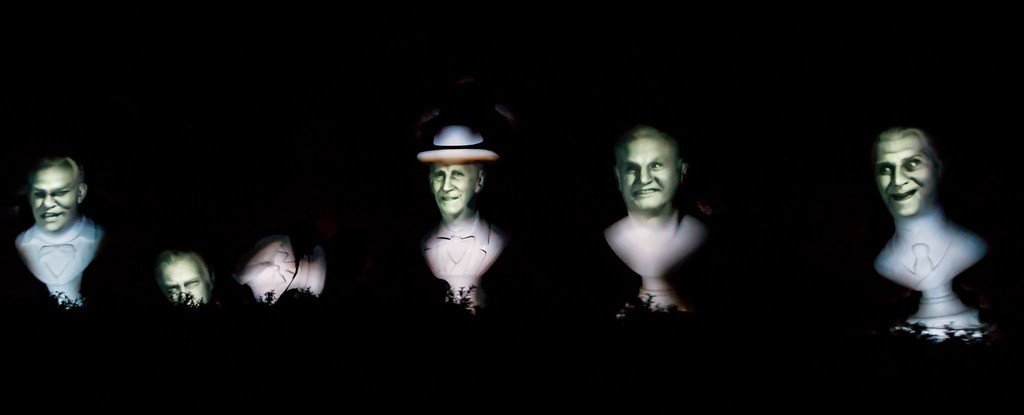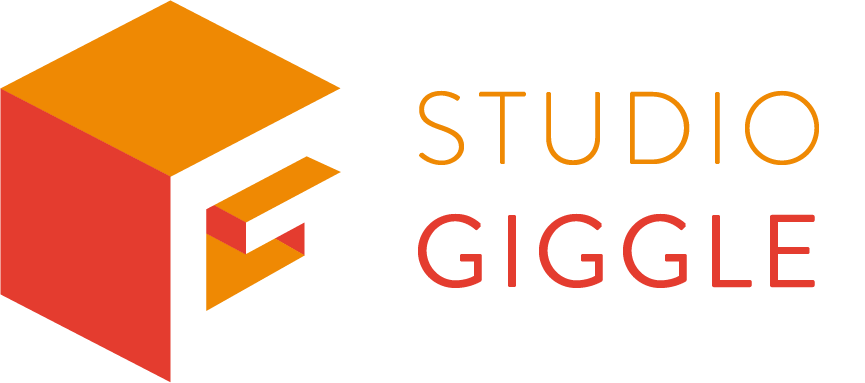Projection mapping, originally known as video mapping or spatial augmented reality, is a technique that Studio Giggle uses a lot. But when was it first used and has it changed since then? We explore the history behind the technique and how it has Disney to thank for its success.
The first public display of projection mapping was in 1969 when Disney used the technology as part of their Haunted Mansion ride at Disney land. The ride comprised of numerous spooky optical illusions, including 5 singing busts known as the ‘Grim Grinning Ghosts’. The Ghosts would appear to sing the theme tune thanks to the use of projection mapping, videos of actors singing were projected onto the busts which made them look as if they were animated.

In 1980 projection mapping was used in an immersive film installation. The installation Displacement, by Michael Niamark, showed a plain and lifeless living room, but when the projectors were turned on, the room was completely transformed to show people interacting with objects in the room.
Broadway was the next industry to be hit by the rapid success of projection mapping. In 1984 James Lapine, director of the original Broadway production of Sunday in the Park with George used the technique. The effect was used to project geometrically-correct moving cinematic images onto a sphere. We were to play a hand in the future of projection with this very same show. In 2006 Jonathan worked on the revival of Sunday in the Park with George where the whole show was projection-mapped. This was the first fully projected stage set.
In 1991 Disney realised just how significant projection mapping could be and as a result patented the technique. Entitled ‘Apparatus and Method for projection upon a three-dimensional object,’ it described a system that could digitally paint an image onto a 3d object.
Shortly after Disney patented the technology, the University of North Carolina Chapel Hill started studying projection mapping. In a project called ‘Office of the Future,’ Ramesh Raskar and his associates imagined a world where projectors could cover any surface. They saw a world where you no longer needed computer screens because you could project onto a much larger space. As part of this, they had an idea of using mapping to connect offices in different locations by projecting people into the office space as if they were really there
After patenting the technique Disney then brought projection mapping back to its haunted-mansion-roots. In 2004 they updated the Haunted Mansion ride and created a floating crystal ball that would levitate and fly around the table. The crystal ball contained the face of Madame Leota and was again a result of projection.
In 2005 Oliver Bimber started projecting onto paintings and big companies like Microsoft had begun experimenting with the technology. Since 2005 projection mapping has had an incredible amount of different uses. Most recently to kick off their Christmas campaign Aldi turned to projection mapping to tease their new advert on the side of the buildings.

Projection mapping is a technological feature that we use regularly at Studio Giggle. Over the years we have become experts at the practise. Our team have all been trained in projection mapping and the software that you need to for it, including Disguise. In the last couple of years we have projection-mapped a 6m wide floating heliosphere for One Young World, transformed the Tower of London into a dragons paradise for Game of Thrones, turned the Guild Hall into an ice wall for Sky and many many more. Projection mapping continues to be used around the world enthralling audiences with its ingenious illusions.
To find out more about projection mapping and how Giggle could help you then email jon@studiogiggle.co.uk or call 0117 972 0081


